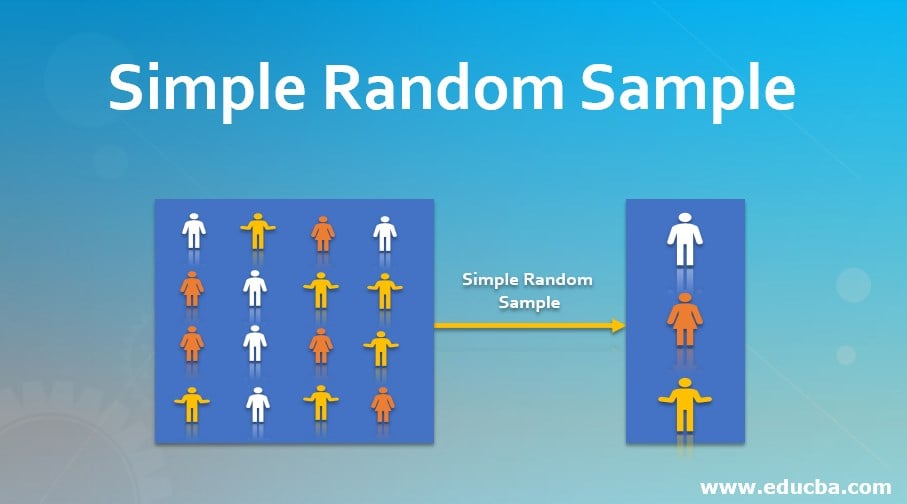Updated July 21, 2023

Introduction to Simple Random Sample
The simple random sample is a type of sampling where the sample is chosen on a random basis and not on a systematic pattern. It is treated as an unbiased sampling method because of not consider any special applied techniques. It is generally used when the result needs to be checked without any special parametric approach.
In Short Simple random sample is as simple as picking up a sample out of many items.
For Example: There are 40 Boxes in the room and we need to open 5 boxes on a random basis. In that case, the chances of every box coming on a single time is 1/40.
There are commonly two terms that need to be understood
- Population Data: Total data out of which sample to be taken.
- Sample Data: Selection/ Picks from the population i.e. total size.
Formula
There is particular no formula for choosing a sample in simple random sampling. One may choose as many samples as is required to conduct any test or result. Probability is fixed and the outcome of the test is totally independent.
Mathematical Approach
Sample size 5%
Population size 1000
Sample taken would be – 5% of 1000 = 50
Types of Sampling
There are mainly 4 types:
- Simple random sampling
- Stratified sampling
- Cluster sampling
- Multistage sampling
If taken the random sample then they are categorized as:-
- Simple random sampling
- Systematic random sampling
Benefits of Using Simple Random Sampling
- It is used when there is a population data which is homogeneous.
- It is as simple sampling that can be applied in general in our day to day life. Choosing 1 thing out of 5
- Simple random sampling assumes that the population has no anomaly i.e. all data are same.
- When the data is too large then it is good to use simple random sampling because chances of getting selection of each sample is almost same.
- It consider that the population data is not skewed and not dependent on selection of any particular sample item.
- It is totally unbiased so people consider it as it is transparent and simple to use.
- Simple random sampling is used when the research department is totally unknown about the facts of the population
- When the cost of using data is not so high then it is cost effective method.
- It uses the concept of fair and equitable basis that chances are almost equal for every item in the total population.
- Data Collection from different area is not filtered in a later stage after initial input collection.
Limitations of Using Simple Random Sampling
- Using simple random sampling consider that data is same, but it is not true in all the cases i.e. reason of using stratified and cluster sampling in which data is categorized into multiple category and then the item is picked in each category.
- There can be a sample selection bias in simple sampling as some data is critical which need to be selected but that can be missed out in the large population so having a simple sampling is easy but not of much use in that case.
- Major disadvantage is sample out of large population which is costly and large time consuming instead one can go for other sample methods in data that is highly credit.
- It is not an efficient approach because sampling represent the entire data and if there is any error in the samples then the result can be deviated differently, that should be arise.
- The size need to be small if one want to use sample random sampling.
- The size is necessary to be large but in the large data, it is impossible to maintain the quality of the population.
Conclusion
- Simple random sampling reduces the chances of sampling error. Sampling error is lowest in this method out of all the methods.
- It reduces the selection bias from the population because we are not taking out data by any strategic method.
- If using simple random sampling, we are free from the classification of data. No segregation is required to make. Directly it can be taken out from the entire data without any modification or implications. We are not in need to know about the full information of data.
- Selected sample may not be the true indicator of the population.
- Ticket or lottery is a perfect example of simple random sampling where 1 out of Million need to be identified, so the likelihood of winning is same for all.
- Result is different from person to person. Since it is selected will be different from person to person.
- No Knowledge of researcher is taken into consideration and it is just a layman approach of having the resultant sample.
Recommended Articles
This is a guide to Simple Random Sample. Here we also discuss the introduction and types of sampling along with the benefits and limitations of using simple random sampling. You may also have a look at the following articles to learn more –

